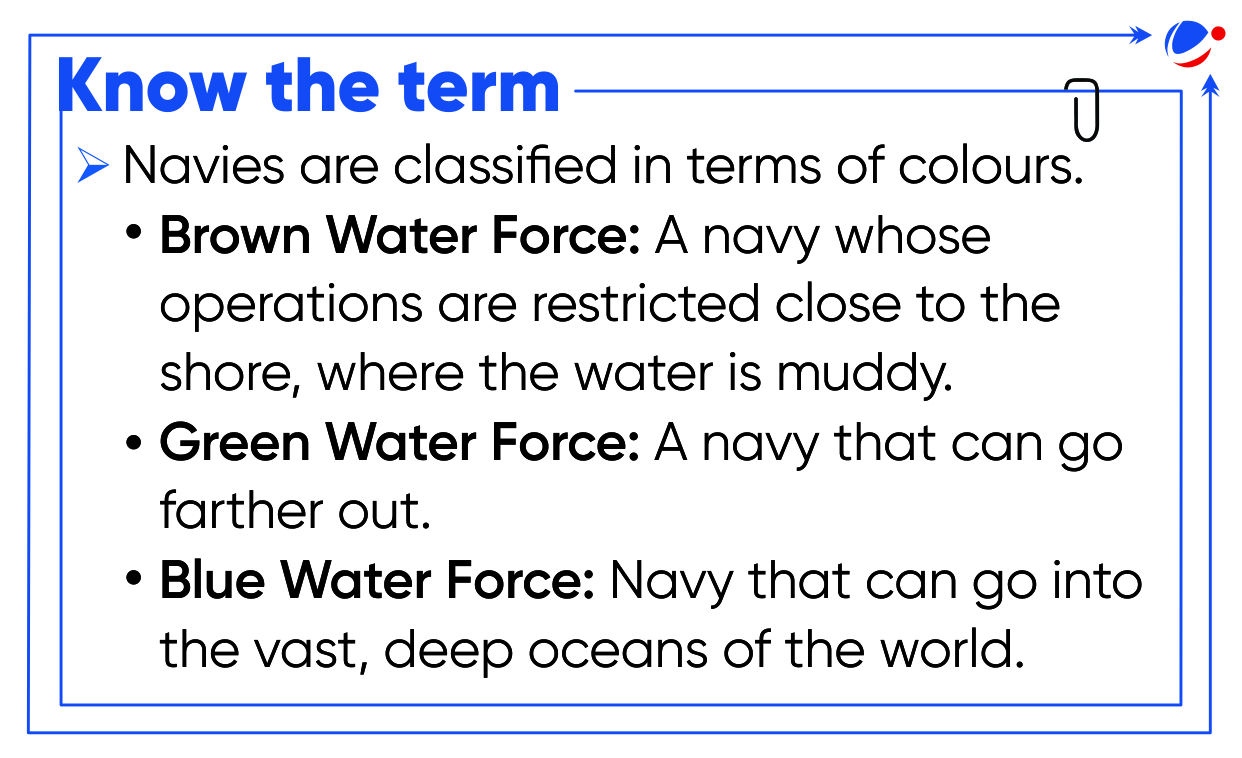Why in the News?
India's Defence Minister recently announced plans for India to commence building its 2nd indigenous aircraft carrier, with intentions to construct "five or six more" in the future.
More on News
- An aircraft carrier offers a wide range of strategic services including surveillance, air defence, airborne early warning, protection of Sea Lines of Communication (SLOC), and anti-submarine warfare.
- Navy Perspective Plan (1985-2000) envisaged a requirement of three aircraft carriers, with two to be operational (East and West coast) and one in refit at any time.
- This requirement was reaffirmed in the Maritime Capability Perspective Plan (2012-27) and Parliamentary Standing Committee on Defence report (2022-23).
- At present, the Indian Navy operates two 45,000-tonne aircraft carriers, the INS Vikramaditya and the INS Vikrant.
- Both are conventionally-powered carriers (not nuclear powered) that use ski-jump ramps to assist aircraft takeoffs.
- The INS Vikrant (means "valiant"), India's first indigenous carrier, has been constructed by Cochin Shipyard Ltd, while the INS Vikramditya was bought from Russia and operationally deployed in 2014.
- INS Vikrant marked India's entry into a select group—China, France, the US, and the UK—of nations capable of constructing their own aircraft carriers.
- Cochin Shipyard Limited (CSL) is poised to begin construction on India's third aircraft carrier (its 2nd indigenous aircraft), marking a significant step towards expanding India's naval fleet.


Why India needs a third aircraft carrier?
- Enhancing Blue Water Navy Capabilities: Indian Navy is considered to be a Blue Water Force and 3rd aircraft carrier would further reinforce this capability of India.
- Such capability is important amid India's bid to be a net security provider and maintain favorable balance of power in the Indian Ocean region where it faces China.
- Continuous Operational readiness: Three carriers ensure that at least two are always operational, providing coverage for both India's eastern and western seaboards.
- Incorporation of advance technologies: The third carrier (IAC-2) may feature advanced systems like the Electromagnetic Aircraft Launch System (EMALS) and CATOBAR for launching heavier aircraft and enhanced capabilities.
- Facilitating projection of India's soft power: In peacetime, they aircraft carrier act as providers of Humanitarian Assistance and Disaster relief (HADR), complementing the roles of amphibious and other air and sealift mechanisms.
Conclusion
Navigating financial constraints and operational challenges while advancing technological capabilities will be crucial for India to maintain and enhance its aircraft carrier capabilities amidst regional competition and geopolitical dynamics.
Aircraft carrier verses Submarines
|



